Why Your Email Marketing Should be Based on the Customer Journey
What is email marketing? Is it simply sending emails (either batched or triggered), or does email marketing involve something much more than that?
A few years ago, I coined the term “Holistic Email Marketing,” which I feel describes a more comprehensive approach for email marketers to take. I came up with this term in response to the typical situation in which an email marketer is focused on a company’s email marketing program that consists of only designing, writing, optimizing, and sending emails.
However, when asked what they’re rewarded on, most email marketers respond “conversions.” So, if we take this into account, we see that there is a flaw in the approach of focusing on only the actual emails, as most conversions happen beyond the email.
I love email, but let’s be brutally honest here. Email is simply a vehicle that drives traffic toward the point of conversion. Only in very rare circumstances is it complete in itself.
When the definition of success is a conversion – whether it be a conversion to download, to buy, or to register – email marketing requires the other marketing channels to be optimized and converting well in order for it to be a successful channel.
No matter how beautifully designed, written, tested, and optimized your email is, if it drives traffic to a landing page that doesn’t perform, then you will not be rewarded (with conversions) for all your effort. Therefore, it makes sense for those of us who are email marketers to ensure the whole customer journey is frictionless and optimized. For only when this happens, will we be rewarded with conversions.
Let’s take a look at some examples of a Holistic Email Marketing approach based on a typical customer journey.
Pay Per Click (PPC)
PPC ads are wonderfully easy to test and optimize; in fact, possibly a little too easy. I come across countless PPC ads that I can tell are being tested. But, the problem is the company didn’t follow through with creating a dedicated landing page for each new ad creative that maps back to the offer or copy they’re testing.
Let’s take this Homebase AdWord ad above for 20% off £150 spend on furniture. Sounds like a good offer, right?
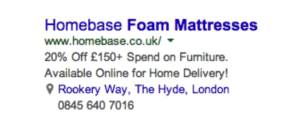
Disconnect! There’s no mention whatsoever of the appealing offer on the landing page, so the consumer bounces off this page and leaves. No data captured, no conversion gained, and a very big (and potentially expensive) missed opportunity to not only gain revenue but also to grow your email list. And, we all know where most of our conversions come from – new subscribers and customers – right?
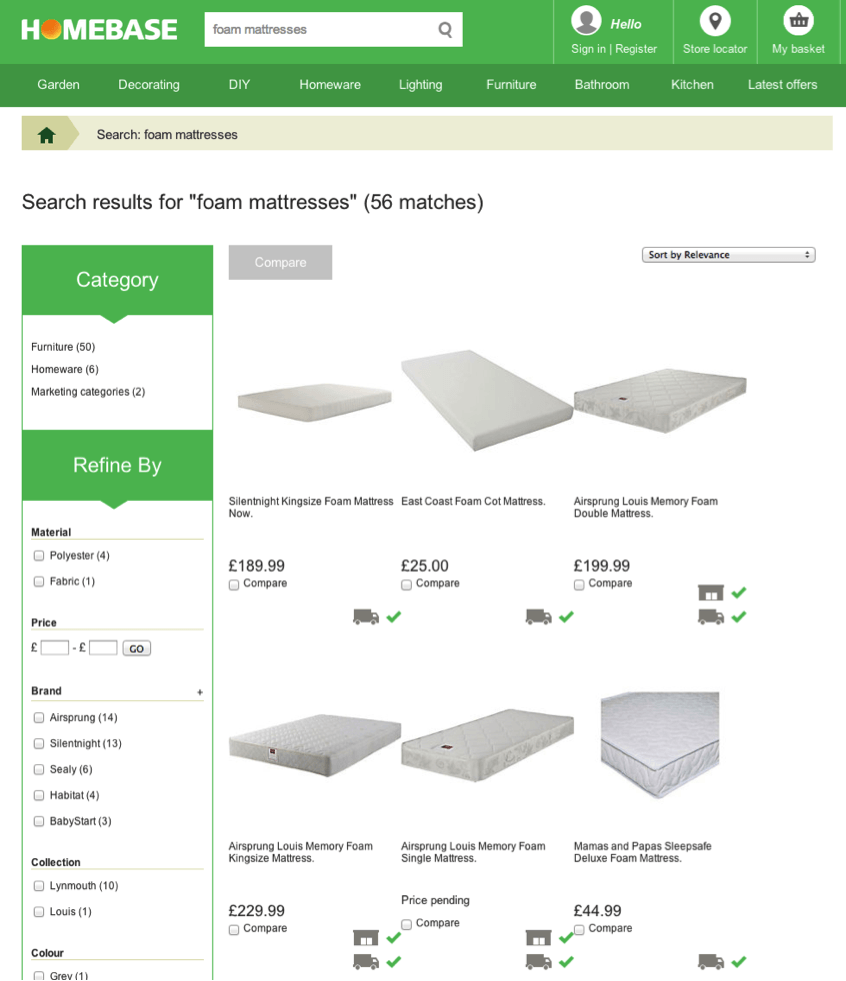
The chart below shows the effect of subscription length on click-through rate [Alchemy Worx audit for an online publishing company, March 2014]. As you can see, subscribers are most engaged and active at the beginning of the relationship.
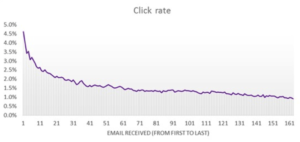
Subscribe/Register
Have you ever gone to a website to sign up for offers and found that the only thing you could do was register for an account? Or, maybe you had to scroll…and scroll…and scroll to the bottom of the page in order to subscribe to receive their offers. That’s crazy.
Why do we make our potential customers work so hard to receive our offers? Most brands I work with tell me that one of their main objectives is to grow their list. So, why is it then that their subscription form is hidden at the bottom of the website?
The brands also tell me they have to fight for real estate on the homepage. I believe that it’s a fight worth taking up. To do so, you need to mine your data and make a business case for prioritizing the position of the subscription form on your homepage.
To be successful at this, ideally, you need to speak to what matters to your business; that is, how growing your database can help your business achieve the objective of gaining more customers, sales, and revenue?
An easy remedy or test would be to move your subscription form above the fold (rather than below the fold), as this Alchemy Worx customer did:
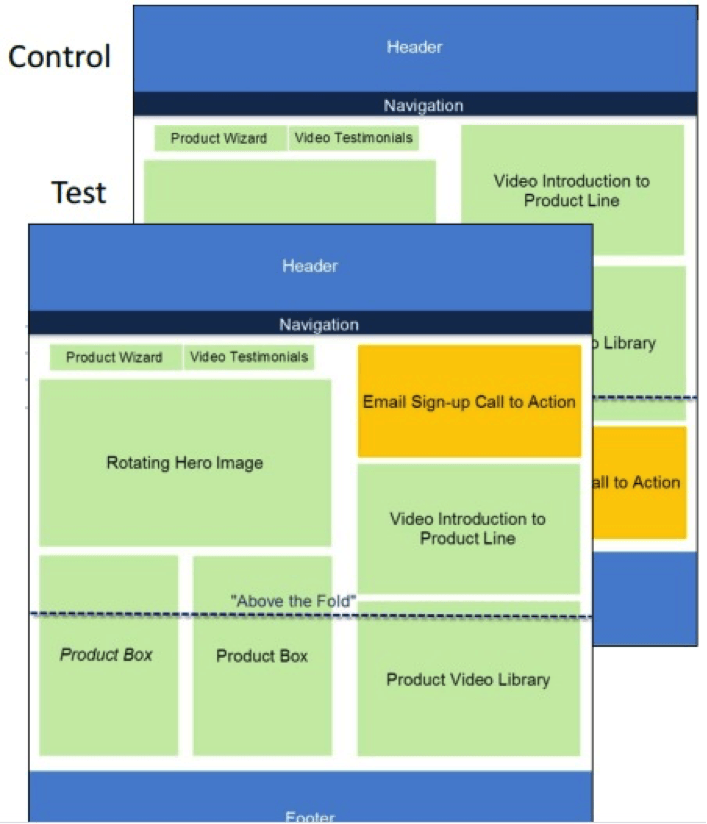
By simply moving the email signup CTA above the fold, this customer gained an uplift of 30% in their subscriber rate. Many argue against doing this due to the misbelief that using this valuable real estate to gain subscribers instead of selling products will cause a loss of revenue. This customer found this hypothesis not to be true, as you can see below. Not only did they gain 30% more subscribers, they also gained 27% more revenue. It’s a win/win.
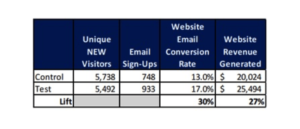
Landing Pages
There are 3 steps to the conversion journey within email itself:
- Get subscribers to convert and open the email
- Get subscribers to click through from the email to the landing page
- Get subscribers to convert to the final objective on the landing page
It doesn’t matter how attention-grabbing your subject line is or how fabulously you’ve optimized the email itself if the landing page doesn’t perform, then you’re not going to get the conversions you desire.
Also, if there’s a disconnect between what is being promoted in the email and the landing page, then you’ll end up with high clicks and low conversions.
If we look at the example below from New Look, we can see that not only is the company doing a great job with its emails, but when subscribers arrive on the landing page looking for more information about the “up to 60% off” sale that appealed to them in the email, it’s easily seen.
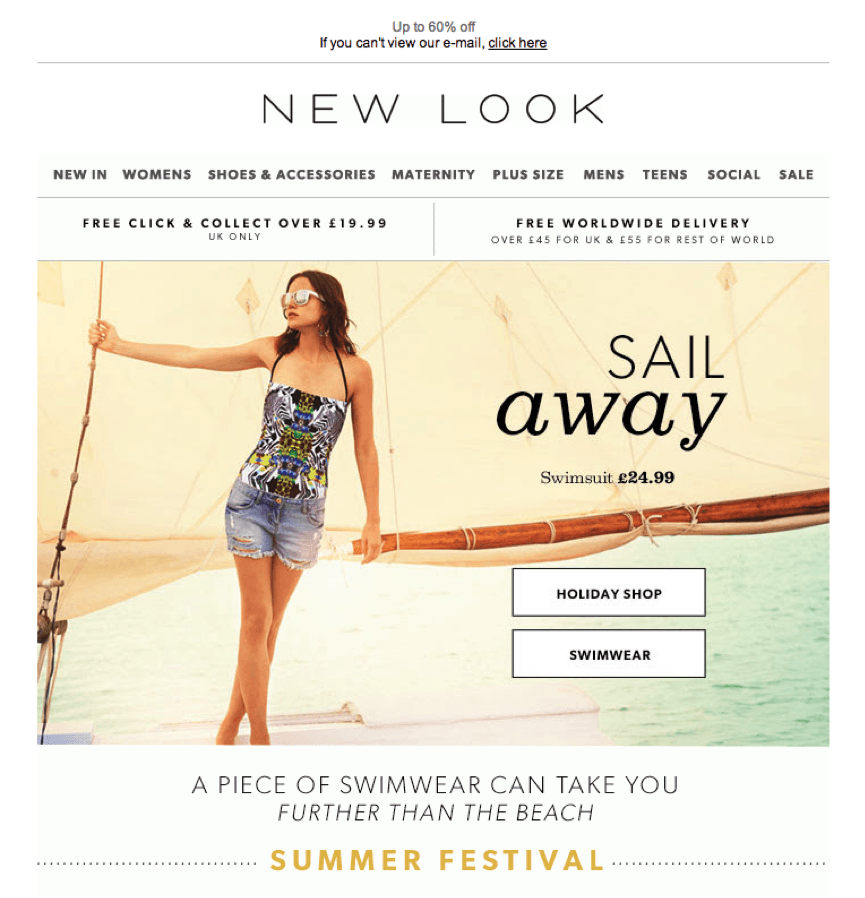
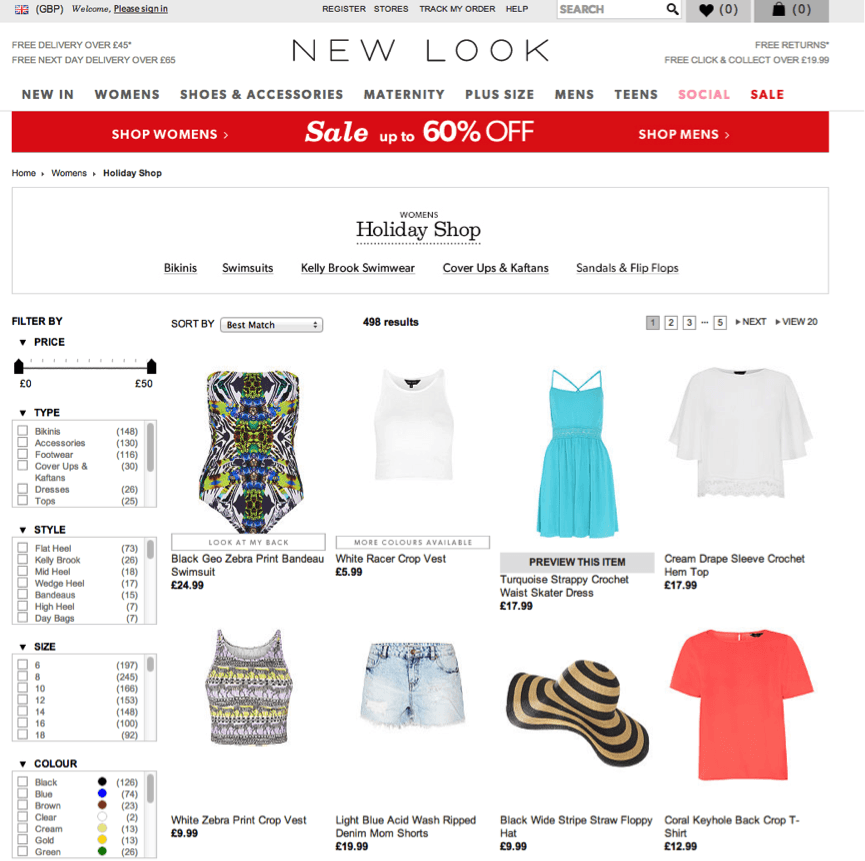
Shopping Cart Process
We’re all familiar with shopping cart recovery emails and the very high ROI they deliver. Using a typical customer journey, we can provide the following average numbers:
- 100% come to the site
- 70% abandon
- 20% of abandoned email addresses are captured
- 20% of those re-marketed to, convert
We’re all familiar with the last step in the process – the cart recovery emails. And, if we’re keen to maximize this touch point, we will test and optimize these emails to ensure we’re converting the maximum number of carts at this stage in the recovery process.
However, if we were to look at this holistically, we would also be looking at the stage prior to this and ensuring we were optimizing the process so that we were capturing as many email addresses as possible in order to re-market to them. This process involves reviewing the purchase journey and identifying any potential barriers to conversion, such as the checkout login page shown below.
This page is the reason this brand captures only 9.13% of email addresses of those who abandon. This page hasn’t been optimized for the customer journey, as it has too many options and is asking the customer to think (!) when all they want to do is continue with purchasing their product. Also, since there is no opportunity for people to add an email address before they arrive at this page, over 90% of those who abandon cannot be re-marketed to.
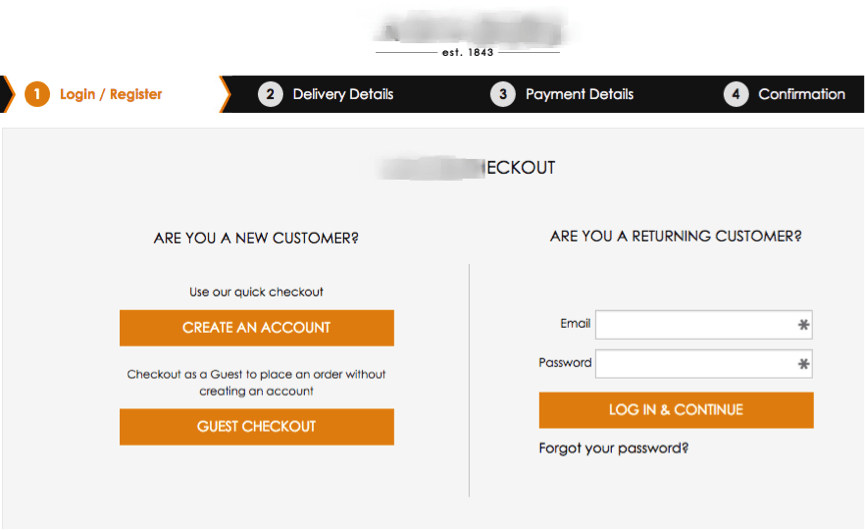
Let’s now review the data of another brand that captures 83% of email addresses of their abandoners as compared with the average customer journey as noted above. You’ll see that by taking a holistic approach and optimizing the customer’s journey, the brand has gained an additional £114,660 for every 10,000 people who add items to their cart.
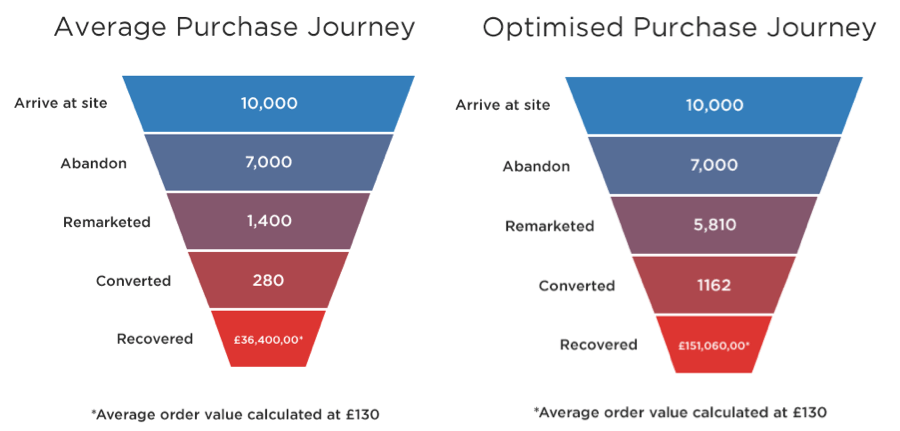
Is looking holistically at email marketing worth it? You betcha!
Holistic email marketing is basically about ensuring that the customer journey is optimized. What happens before the subscriber receives the email and what happens after they leave the email can impact how successful your email program is.
The bottom line is that all of the above are examples of non-email marketing actions/inactions that can impact your email marketing ROI, either positively or negatively.
Interested in finding out more? Check out how the awesome team at Holistic Email Marketing can help take your email programme to the next level.

